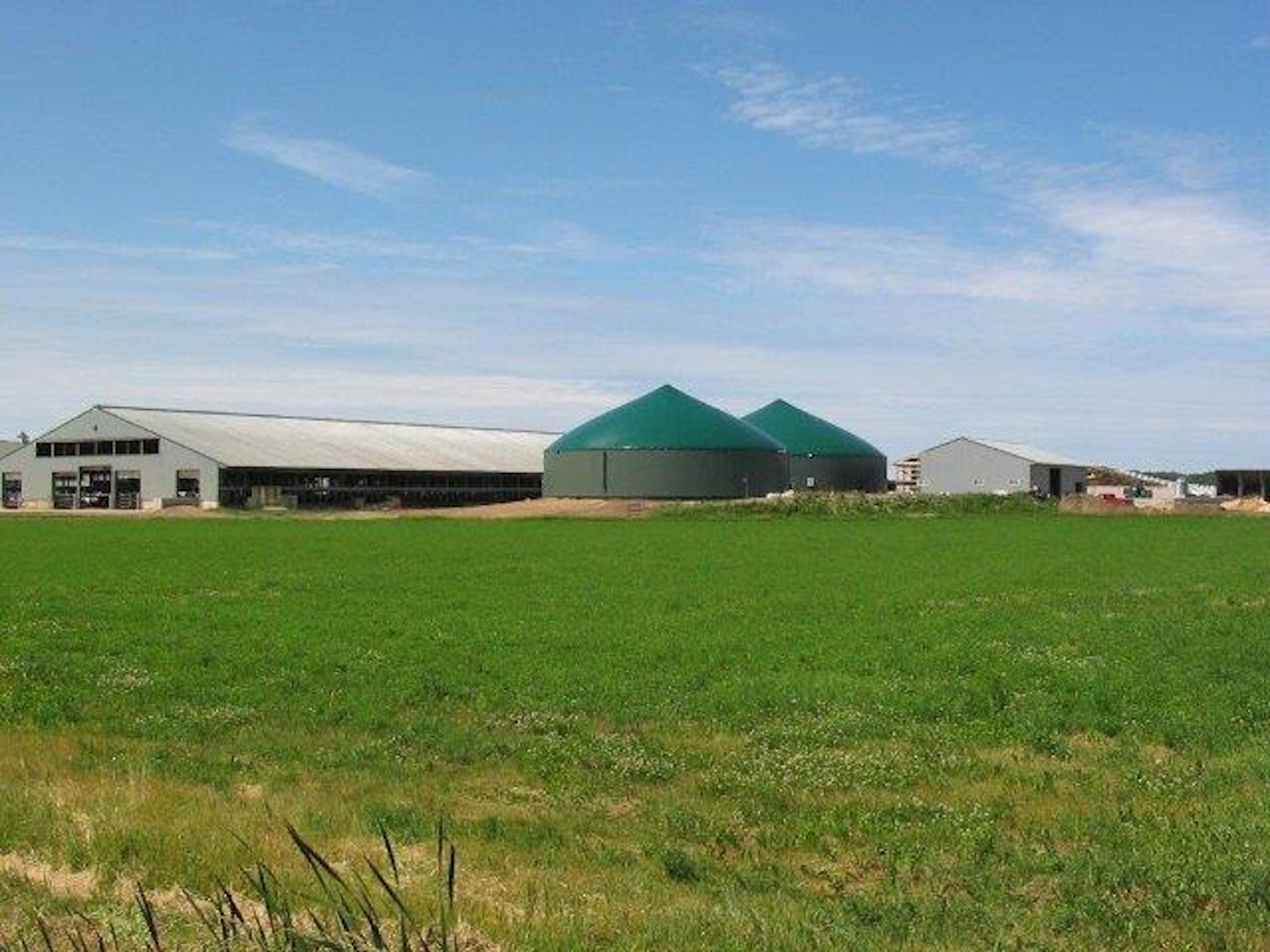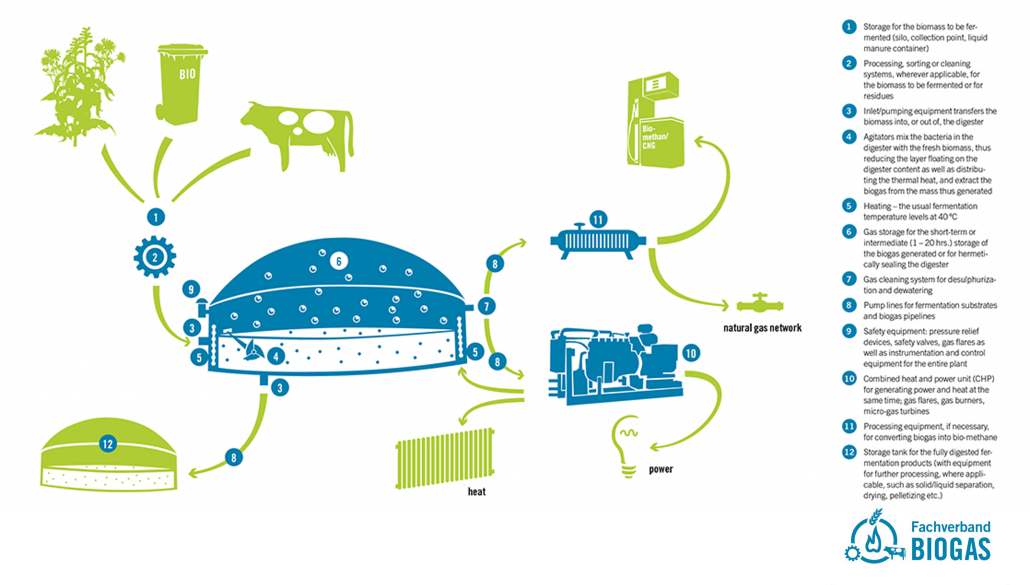Biogas
- Fuel of the Future
Biogas
Raw biogas is a regionally produced energy source. Since it is used, where it is produced, the production contributes to the preservation of the local environment and strengthens the domestic economy.
Biogas is a high-energy gas mixture that is produced by the breakdown of biomass through microorganisms in the absence of oxygen (anaerobically). The term biogas includes sewage gas, digester gas and landfill gas. The creation of biogas is mainly about the work of special microorganisms in the biomass. These bacteria multiply under exclusion of oxygen (anaerobic), decompose biomass and produce the important biogases as a ,,waste product”.
Biogas Plants
The production of biogas in biogas plants happens in large tanks, the so-called fermenters, which can be observed in many agricultural landscapes. These fermenters are hermetically sealed, heated and have an agitator as well as various measurement and control technologies for regulated process control.
There are various biogas plant concepts, depending on the condition of the substrates. Each fermenter is constructed in the same way: It consists of a layer of solid biomass, liquid nutrient substrate and the various gases produced during the fermentation process. In order for the microorganisms to work, it must also be opaque, airtight and – depending on the plant – heated to a certain temperature.
In wet fermentation, the substrate has a high water content and can be supplemented with industrial waste (coferments) and liquid manure. Pumps distribute the biomass, an agitator continuously mixes it and provides the necessary circulation.
In dry fermentation, the substrate is relatively dry and stackable. However, for the fermentation to work, a certain moisture content of the biomass must be reached. Enrichment (inoculation) of the biomass with microorganisms is also possible.

Depending on the type of biogas plant, the temperatur for the bacterias to work lies between 32 to 42C° or 50 to 57C°. A circular jacket provides constant
temperature of water, which keeps the temperature of the bioreactor at a
constant value. The needed energy comes from the already produced biogas. No additional energy is needed.
The used biomass consists mainly of substrates from the food industry (coferments) as well as harvest residues from agriculture. Examples are liquid manure, silage (silage fodder) or waste from beer and wine production. Another important role is played by energy crops, especially corn or sugarcane.
Function of a biogas plant with wet fermentation


The cogeneration or combined heat and Power (CHP) plant uses the produced biogas to produce heat and energy. The supply of high temperature heat by burning the gas first drives a gas turbine-power generator. The less hotter waste heat is then used to heat up water and the space of nearby buildings.
Compressed Natural Gas is a fossil fuel mainly consisting of methane. Compressed to 200-250 bar, it can be transported via CNG cascades or by the natural gas grid. Technically, natural gas and biomethane are almost identical and can therefore be mixed in one drive engine.
Utilisation of the Biogas
The dried and desulphurised biogas is mainly processed directly at the biogas system in a cogeneration plant to generate electricity and heat for nearby buildings. The energy generated in this way is also needed to operate the biogas plant. Furthermore the energy can be fed into the power grid.
Another possibility is the refinement of the biogas to natural gas quality in a connected treatment plant. The biomethane refined in this way can then be forwarded to heat-intensive plants located in the neighbourhood. Feeding into the natural gas network is also possible as the biomethane has nearly the same quality as CNG. Together with our partners, Bioenergy is working on a Biogas Upgrade System.
What remains is a so-called fermentation residue, an aqueous mixture of hardly degradable organic material. This can be used as fertilizer in agriculture after post-processing.
Main Advantages of Biogas Plants
Climate Protection
Biogas plants use natural processes to produce electricity, heat and eco-friendly fertiliser. They actively contribute to climate protection!
Waste and disposal utilization
The disposal of waste and liquid manure, which is subject to a charge, can be replaced by biogas plants. The substrate left over after fermentation can be used as fertiliser.
Return on Investment
The electricity generated by biogas plants can be fed into the power grid. Furthermore the produced biogas can be refined into methane. A new source of income is created.
Independent Source
Heat and electricity can be produced by biogas plants independently of electricity producers and electricity prices.
Vortex-Extraction-Digester
by Bioenergy Concept
To improve the maintenance of biogas plants, Bioenergy Concept developed a modern digester design.
The simple VED design provides an easy solution for the cleaning process of sediments in the working digester. It is unique in his type and function and increases the profitability of the plant.

